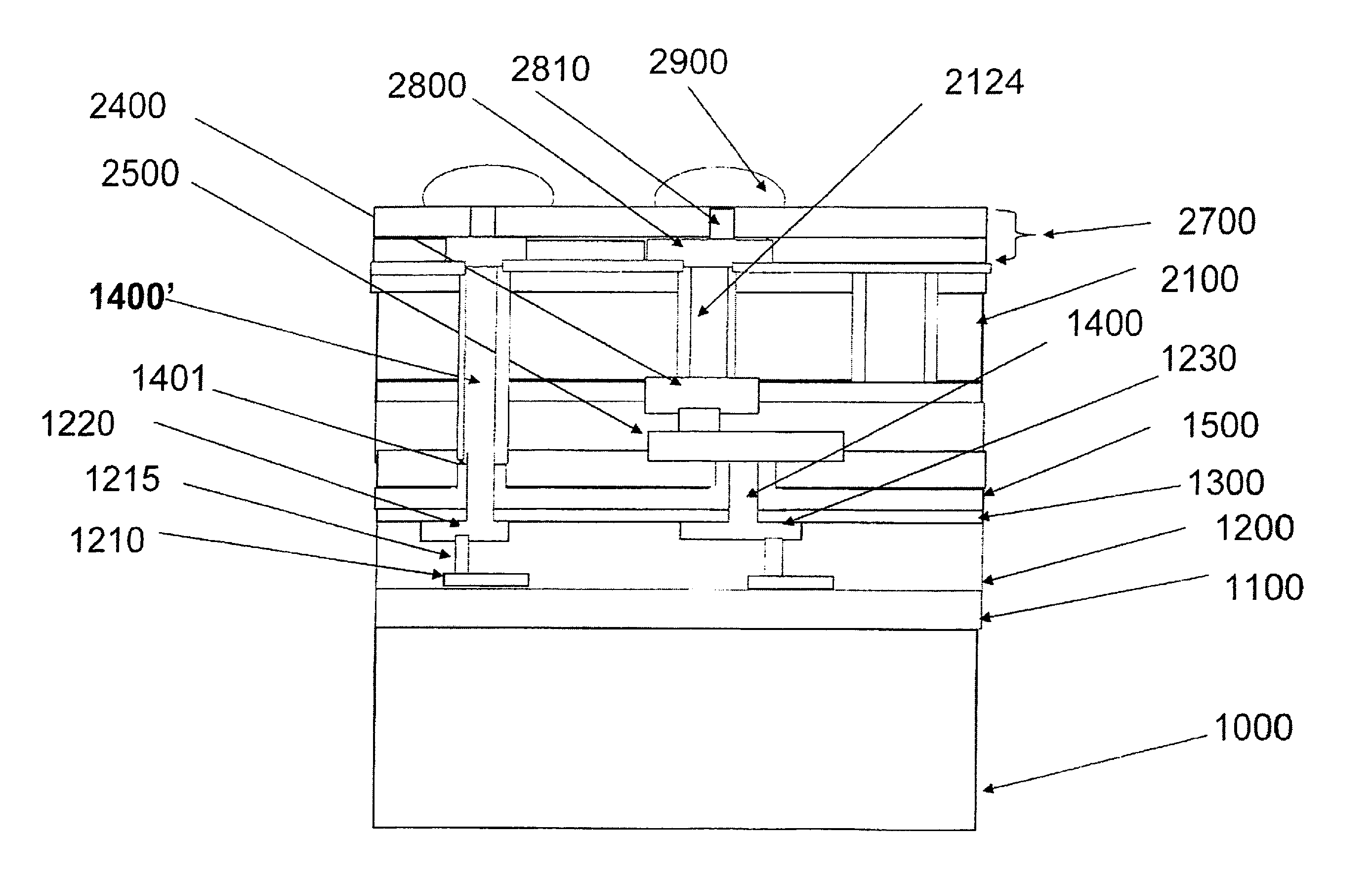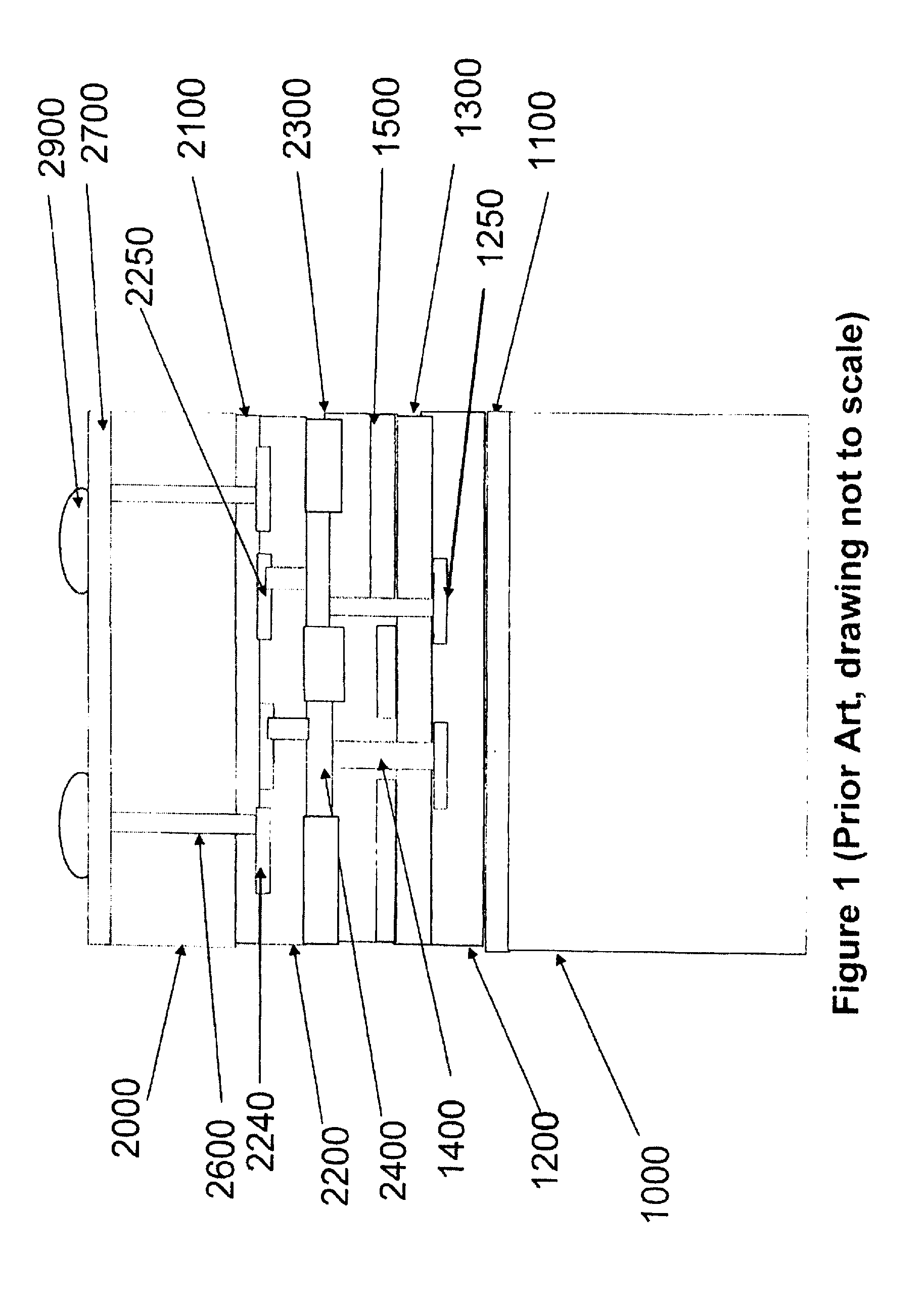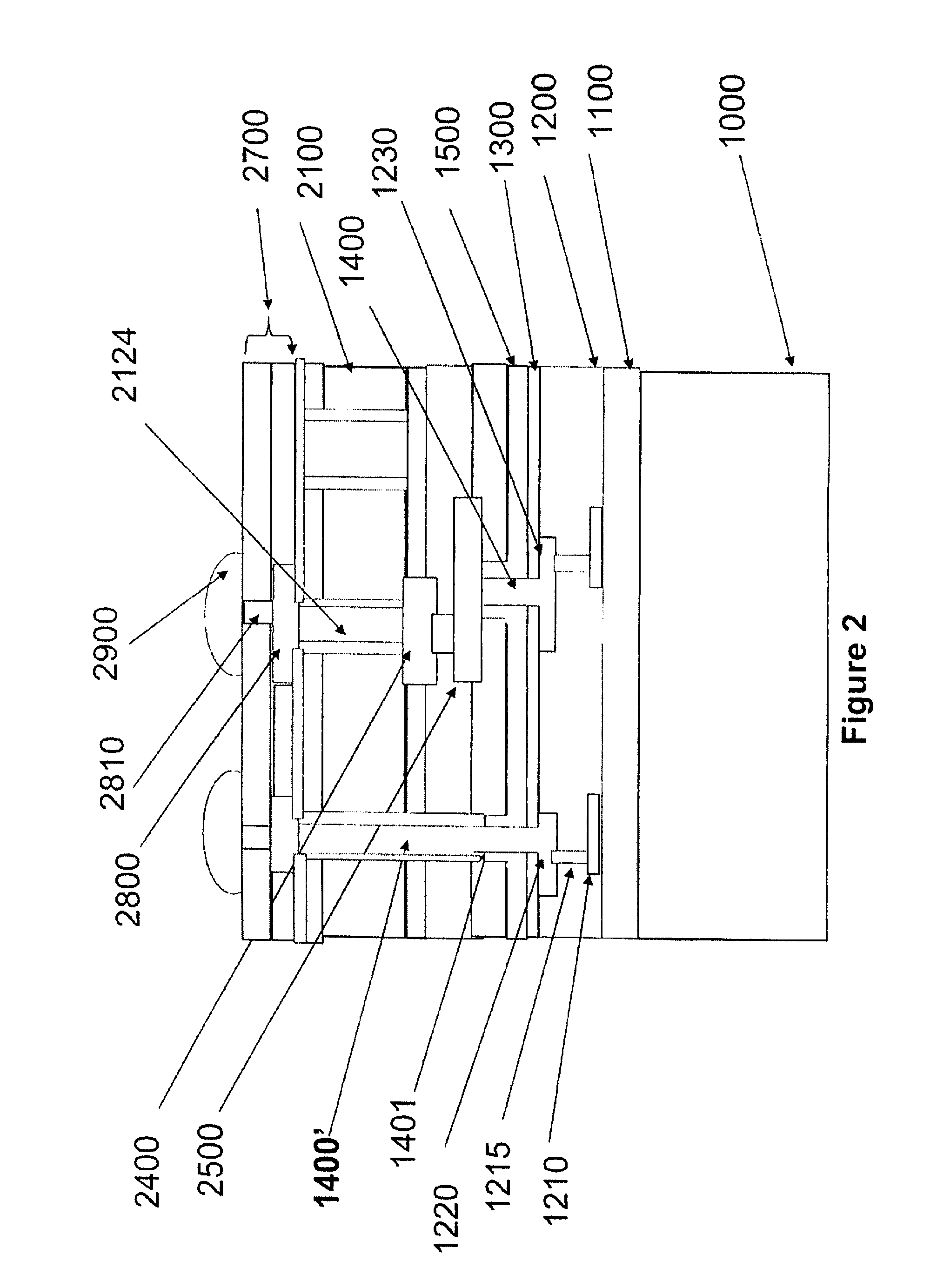Lock and Key Through-Via Method for Wafer Level 3D Integration and Structures Produced Thereby
a technology of through-via and lock, which is applied in the direction of basic electric elements, electrical equipment, semiconductor devices, etc., can solve the problems of deep silicon etching, the inability to manufacture deep tsv's, and the inability to meet the requirements of through-via filling, etc., to achieve high yield and robustness, and the fidelity can be less than optimal, and the effect of easy adaptation
- Summary
- Abstract
- Description
- Claims
- Application Information
AI Technical Summary
Benefits of technology
Problems solved by technology
Method used
Image
Examples
Embodiment Construction
[0040]To achieve these and other advantages, and in accordance with the purpose of this invention as embodied and broadly described herein, the following detailed embodiments comprise disclosed examples that can be embodied in various forms. The specific processes and structural details set out herein comprise a basis for the claims and a basis for teaching one skilled in the art to employ the present invention in any novel and useful way. The terms, phrases and Figures also set out herein provide a description of how to make and use this invention. One having ordinary skill in the relevant art, once aware of the present disclosure, could employ suitable processes and structures without undue experimentation.
[0041]In one aspect, the invention comprises a structure comprising two device layers joined together to form an electronic system which comprises:[0042]a first device layer disposed on a first substrate and comprising a first set of circuits and interconnect wiring;[0043]a seco...
PUM
 Login to View More
Login to View More Abstract
Description
Claims
Application Information
 Login to View More
Login to View More - R&D
- Intellectual Property
- Life Sciences
- Materials
- Tech Scout
- Unparalleled Data Quality
- Higher Quality Content
- 60% Fewer Hallucinations
Browse by: Latest US Patents, China's latest patents, Technical Efficacy Thesaurus, Application Domain, Technology Topic, Popular Technical Reports.
© 2025 PatSnap. All rights reserved.Legal|Privacy policy|Modern Slavery Act Transparency Statement|Sitemap|About US| Contact US: help@patsnap.com



